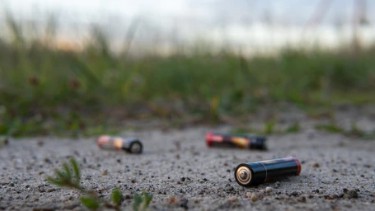
Heavy metal pollution seriously threatens agricultural production, productivity, wildlife, and human well-being. Anthropogenic activities result in the accumulation of heavy metals such as copper (Cu), mercury (Hg), and lead (Pb) in the soil and environment. Toxic metal/metal-like contamination is also an important factor affecting the growth and productivity of forage grasses. Considering the important morpho-physiological characteristics of metals, phytoremediation is the strategy for metal remediation with the least environmental impact, especially through forage. The metal extraction efficiency of forage plants can be improved by employing strategies such as combining forage with chelators and/or microorganisms; fertilization with N, P, K, and/or S; and breeding to increase metal uptake and tolerance.
We are committed to an integrated histological approach related to the development of toxic metal/quasi-metal tolerant plants to identify components of forage response to heavy metal stress, and to assess processes related to uptake, transport, accumulation, and toxicity of trace elements in phytoremediation forage, including but not limited to.
(i) Leaching of metal-chelating compounds.
(ii) Plasma membrane activity.
(iii) Retention of metals in the root cell wall.
(ⅳ) Synthesis of thiol compounds, amino acids, organic acids, and sugars.
(ⅴ) Antioxidant system activity.
Plant breeding enables plants to adapt to unfavorable environmental conditions by transferring useful properties. Our scientists are working to develop forage grasses more tolerant of heavy metals to mitigate heavy metal toxicity in agriculture. We can genetically transform a wide range of forages to improve the desirable characteristics of grasses for trace element phytoremediation. Llifeasibe offers customized solutions for the molecular breeding of heavy metal tolerant forages, genetically modifying domesticated crops through breeding and selection to produce forage varieties that are more tolerant to heavy metals.
We analyze the broad genetic diversity of various heavy metals (Zn, Cu, Cd Pb, Ni, As, and Sn) based on physiological criteria such as relative branch weight, root weight, and leaf chlorophyll content. To attract customers, we offer genetic engineering strategies for molecular breeding of heavy metal tolerant forages:
(1) Effective screening techniques for selecting and evaluating specific traits.
(2) Identification of genetic variation.
(3) Knowledge of the inheritance of tolerance traits at specific developmental stages.
(4) Knowledge of the biological mechanisms behind tolerance.
(5) Reliable direct or indirect selection criteria.
(6) Design the most appropriate breeding method/strategy to transfer the tolerance trait to an improved genetic background.
Our sequencing and bioinformatics methodologies can predict genomic selection. Our advanced genetic technologies allow targeting changes to specific loci through "gene editing" techniques. Integrating available information on mechanisms of trace element uptake, transport, accumulation, toxicity, and tolerance in forage grasses, Lifeasibe develops gene-functional engineering strategies for enhancing the efficiency of grass phytoremediation of trace elements. We aim to enable forage grasses to grow more efficiently under heavy metal stress than conventional varieties. Please contact us for more detailed information.
Reference
Lifeasible has established a one-stop service platform for plants. In addition to obtaining customized solutions for plant genetic engineering, customers can also conduct follow-up analysis and research on plants through our analysis platform. The analytical services we provide include but are not limited to the following:
July 13, 2024